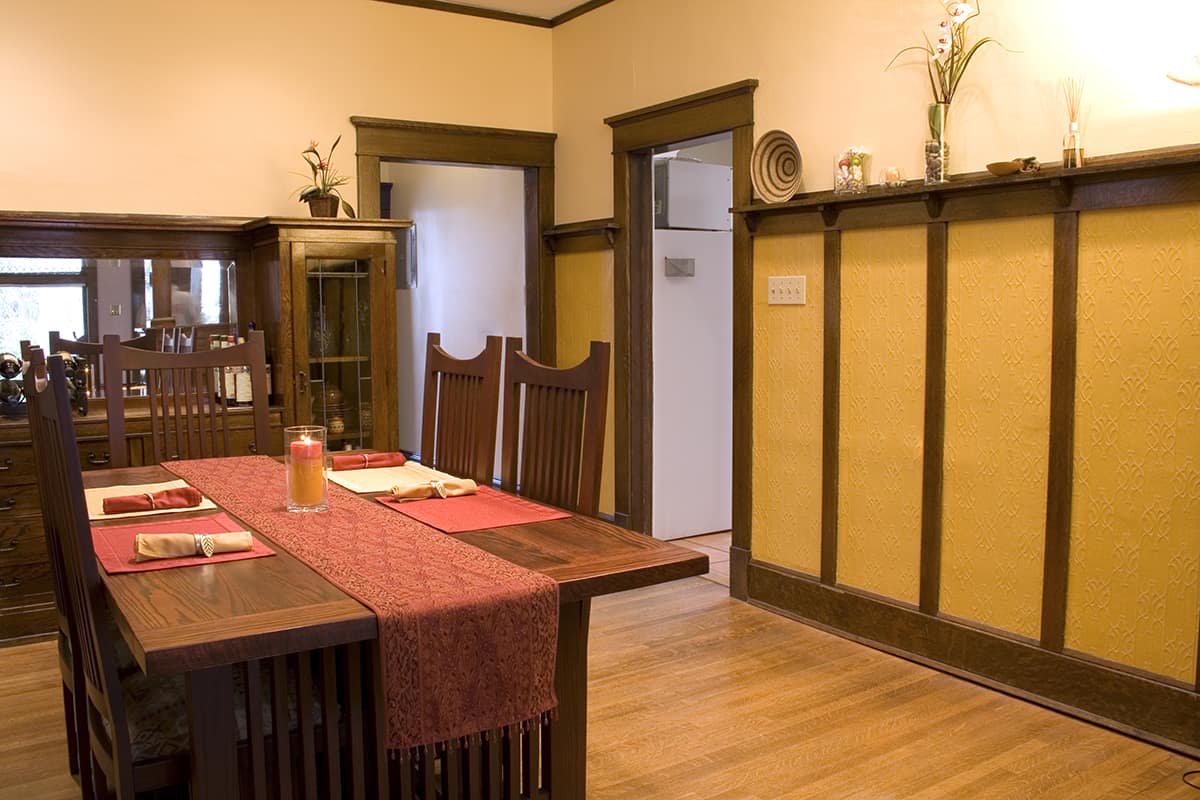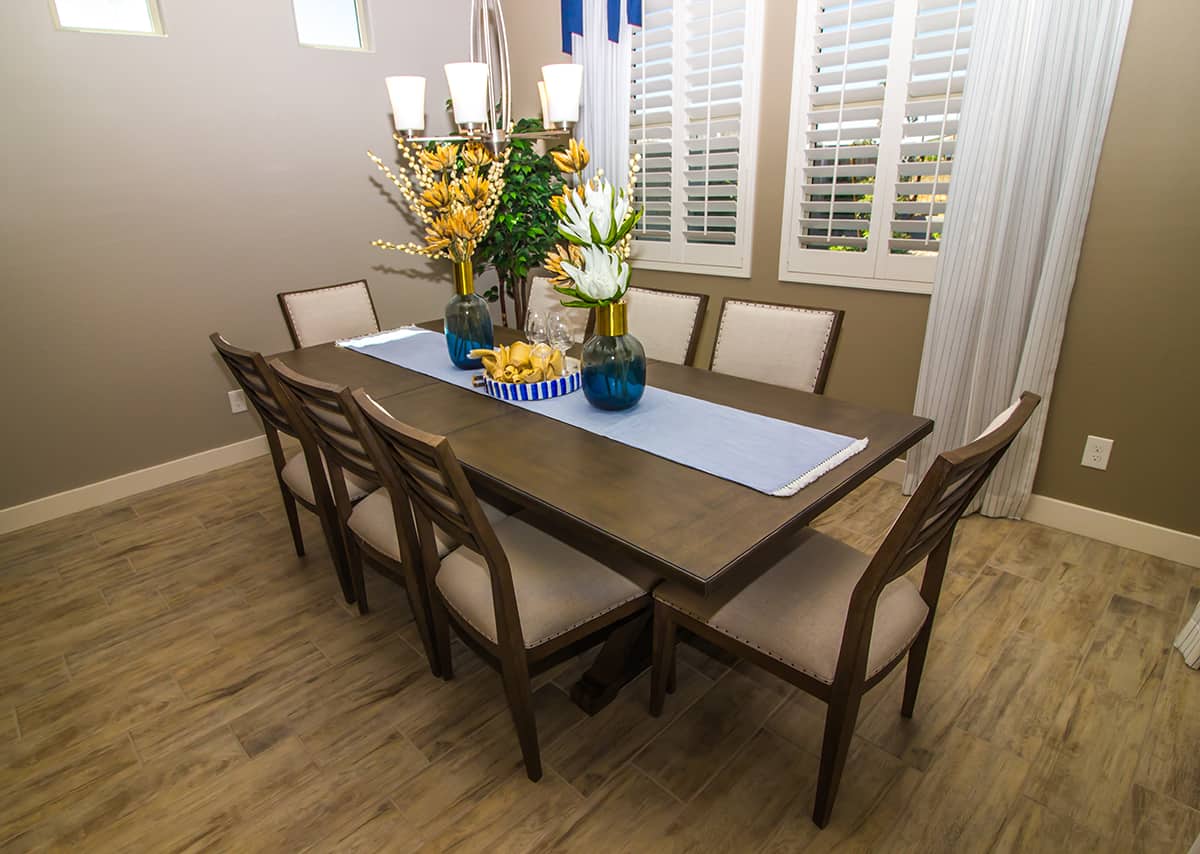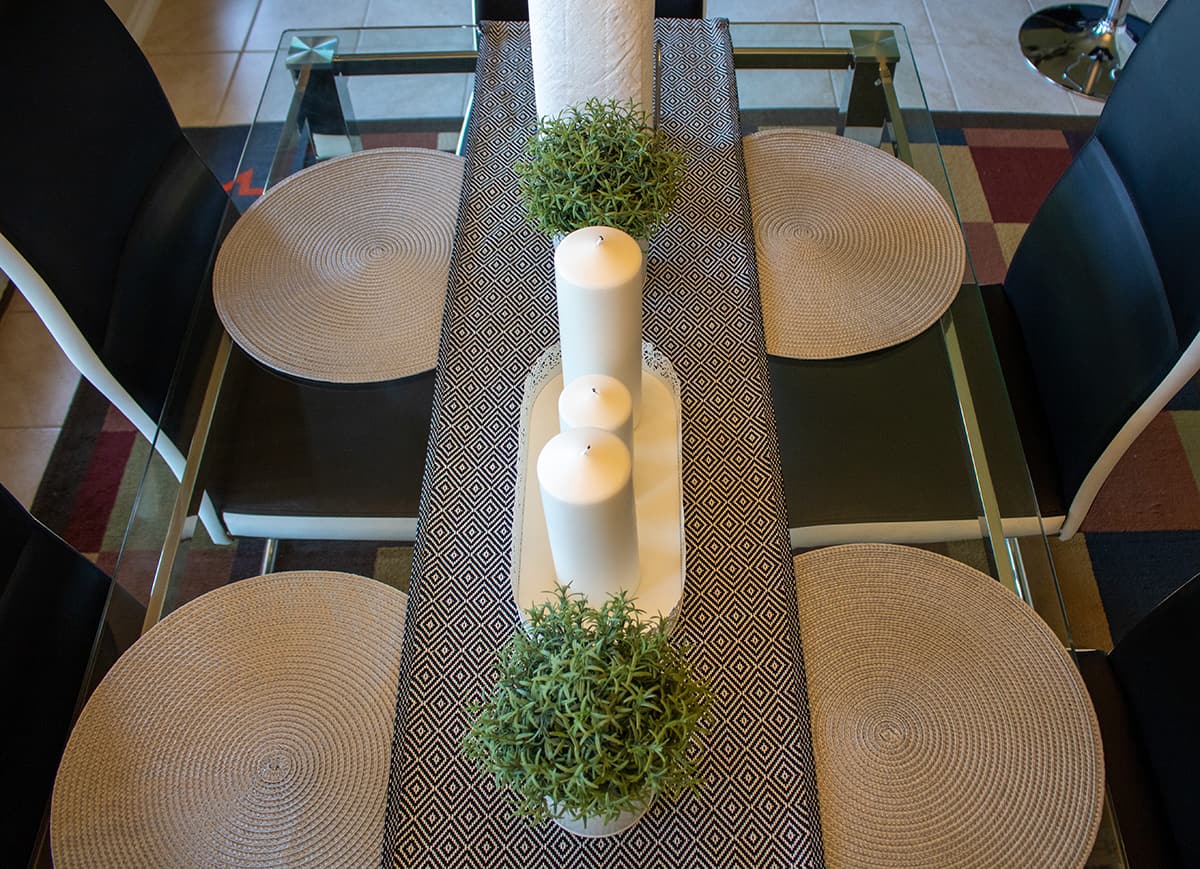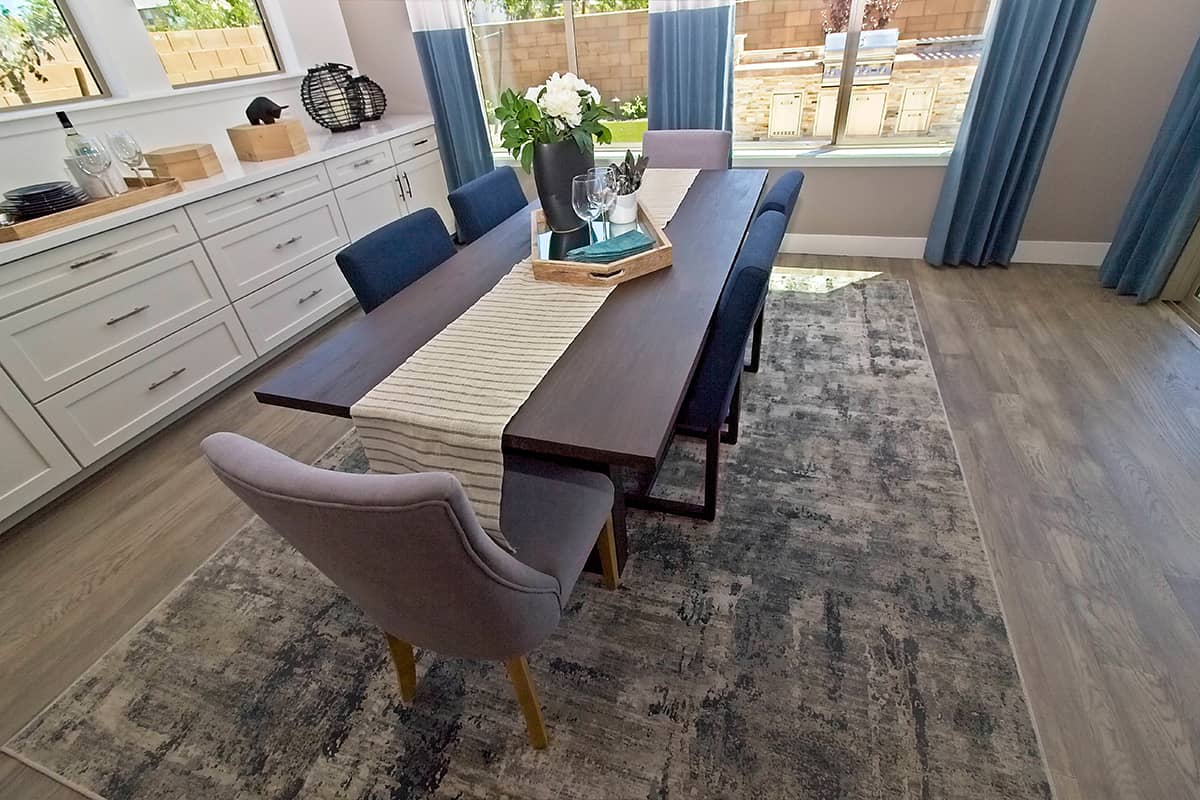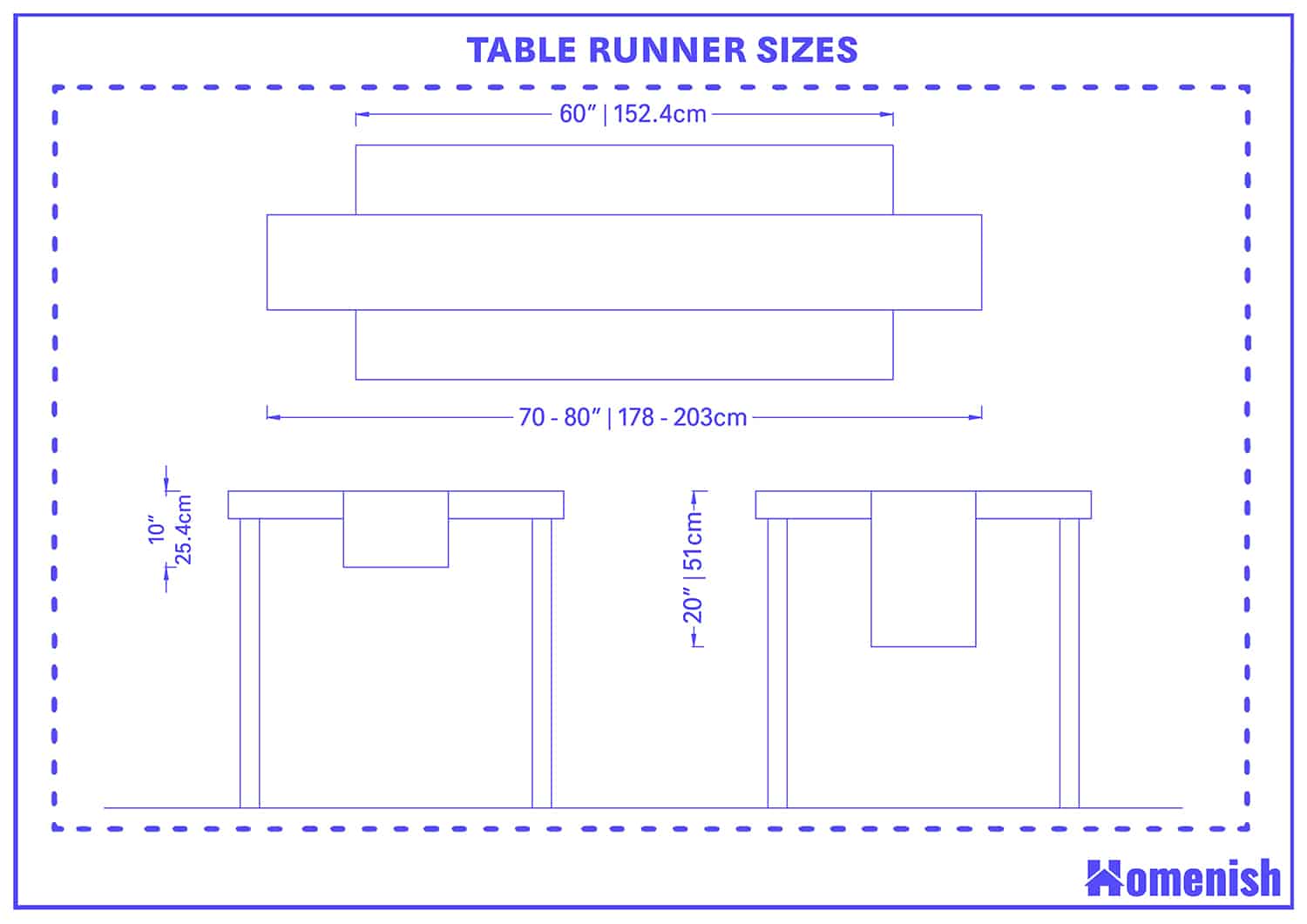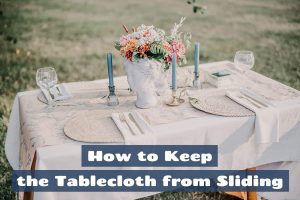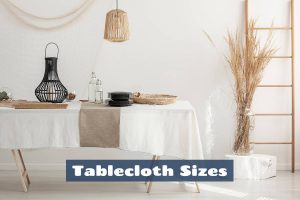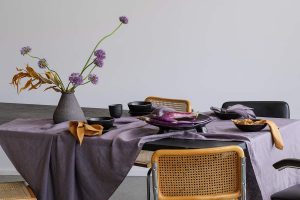A table runner is a long piece of fabric that can be used as a decorative item on a dining table or as a protective surface to display a centerpiece on. You can use a table runner instead of a tablecloth or use it on top of a tablecloth for a layered effect.
Whichever style and setup you choose, you’ll need to know the correct sizing for a table runner so that you buy a size that corresponds with the size of your table.
Benefits of a Table Runner
Color
You can help to define the color scheme of your room by using a table runner in a color that matches other items in the space. For example, choose a red table runner to coordinate with red curtains or a gray table runner to coordinate with gray painted walls.
Table runners are available in any color you could imagine, so you can also use table runners to showcase your own tastes and choose a color that reflects your personality.
Texture
A table runner adds texture and warmth to a room because they provide a soft, fabric surface on a hard dining table. The softer the furnishings you have in a room, the more comfortable and welcoming it will feel.
A dining room is an area of the home which tends to lack soft furnishings, so if your dining room feels uninviting or severe, use a table runner to soften the edges and make the space feel more homely.
Protection
Many people use a table runner instead of a tablecloth to protect the center of the dining table, where a centerpiece would be positioned. If you have candles in the middle of your table, then the table runner will protect the table against hot dripping wax, or it will prevent circles forming on your table from hot serving dishes.
Style
A table runner can be used to help define the style of a room. For example, a silk or satin table runner will dictate an elegant or formal style, while a crochet table runner will set the style as more relaxed or bohemian.
Table Runner Sizes
When choosing a table runner, most people will focus on the color, the style, and the material, but you also need to be aware of the sizing because table runners are not a ‘one size fits all’ kind of item.
Length
A table runner will run along the length of the table, or it can go in either direction if your table is square or round and therefore doesn’t have a long side. Since the runner will need to be positioned along the length of the table and also have material hanging over each end, then the table runner will need to be longer than the table length.
Measure your dining table before you go shopping for a table runner to make sure you don’t buy one that is too long or too short. The runner should overhang at each end of the table by between 5 and 10 inches.
This means your table runner, at a minimum, should be 10 inches longer than the length of your table, or at a maximum, 20 inches longer than the length of your table. If your table, for example, measures 60 inches long, then your table runner should be between 70 and 80 inches in length.
If the table runner overhangs by less than 5 inches, then it will look insubstantial and an inappropriate length for the table. If it overhangs by more than 10 inches at either end, then it is going to get in the way of people seated at the ends of the tables.
Width
The width of a table runner should cover approximately a third of the width of your table. For example, if your table measures 30 inches in width, then the table runner should be around 10 inches in width. You can exceed this measurement slightly, but don’t buy a table runner that covers less than a third of the width of your dining table because it will look meager.
The way that you plan to use your table runner might affect the width measurement you choose. For example, if you want to keep the table runner in place during meal times, then you’ll need to make sure you can fit dinner plates around the table runner.
Table Runner FAQ’s
Can round tables use table runners?
Yes, tables of any shape and size will work with table runners. With a round table, your table runner can go across the table in any direction, as long as it crosses the center point. For an oval table, position the table runner along the central length of the table, the same as you would with a rectangular table.
Can I wash a table runner?
The washing recommendations for a table runner will depend on what material it is made from. Cotton table runners can be machine washed, but more delicate table runners or those which feature embellishments will be better suited to spot cleaning with a wet cloth.
Some table runners will be made from oilcloth, and these can be sprayed with cleaning fluid and cleaned with a sponge. Many table runners can be ironed or steamed to remove any wrinkles, but always check the care instructions beforehand to be sure you don’t damage your table runner.
Are table runners only for dining tables?
Most people only consider table runners for dining tables, but actually, they can be used on almost any table in the home. Console tables, side tables, and even coffee tables can benefit from table runners as a means of protecting the tables from the things you put on their surfaces, but also to add style, color, and texture.
Dressing tables can also be used in conjunction with table runners, and these are a good place to rest hair tools and make-up so that your dressing table surface beneath the runner doesn’t get damaged.
